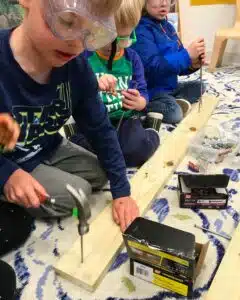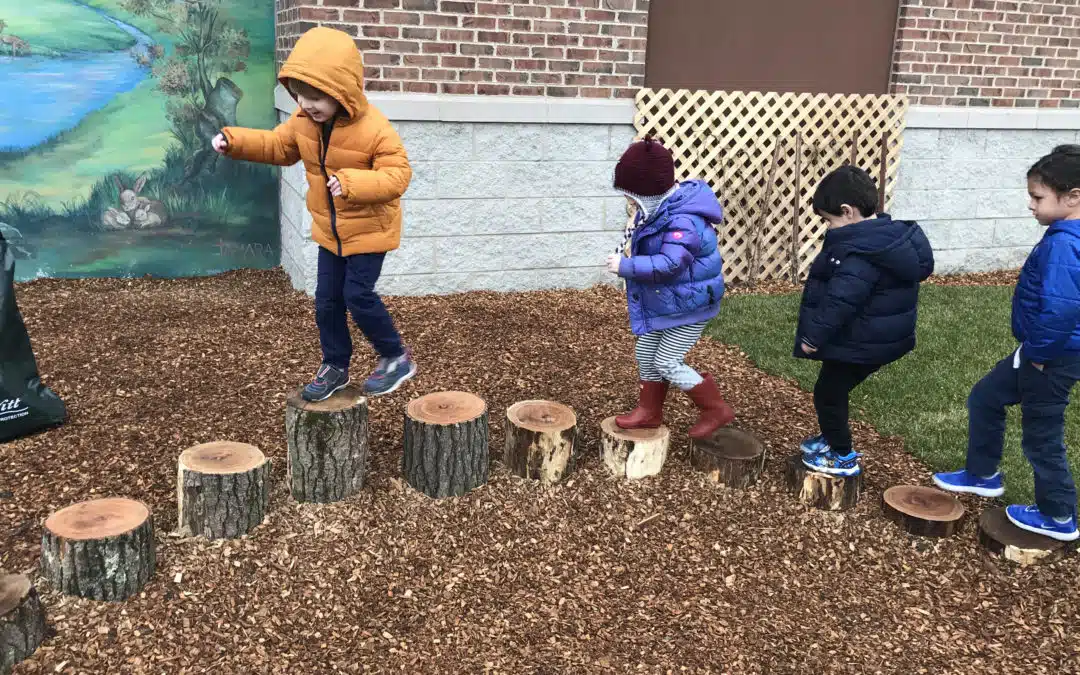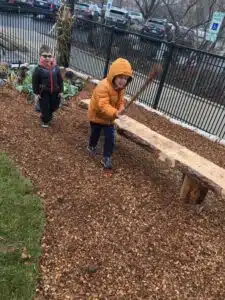As the construction on our new Nature Playground grows closer to completion, the excitement in the air from both students and teachers is palpable. We have been so thankful for our amazing indoor playspace here at Bubbles Academy where students can run, jump and play on our super safe soft climbers and carpeted floors. Of course, the occasional head bonk or carpet burn does occur, it’s unavoidable; when preschoolers engage in fully committed gross motor and dramatic play there is always a certain amount of risk involved, even in the safest of spaces with the most attentive adults present. And, as we prepare to take the leap out into the Recess Great Outdoors, we know that there will be even more risks involved in our play. But, I find it invigorating to provide my students with more chances to see just how much their bodies and minds are capable of.
Hazard vs. Risk
If you’re not quite ready to share this perspective with me, let me share a little bit about how I got here. One of the most important steps on the journey to appreciating risky play is understanding the difference between a hazard and a risk. A hazard is dangerous- a downed power line, oncoming traffic, a rabid racoon! But, a risk, now a risk is completely different. Risks are what make play fun, what provide challenging and unique opportunities to build new skills in the areas of executive functioning, gross and fine motor development, social negotiation and self-esteem. And, more often than not, these opportunities can only be found in an outdoor environment. Our neighbors to the North in Canada have done countless studies and implemented a nationwide initiative to encourage and help caregivers understand the benefits of risky, outdoor play for children, and it is my hope that us Americans will soon follow in their footsteps with the help of engaged parents, caregivers and educators. Mariana Brussoni, a professor at the University of British Columbia and BC Children’s Hospital — featured in The Nature of Things documentary The Power of Play lays out the following key factors in risky play:

1. Play with heights, such as climbing trees or structures
2. Play at high speeds, such as a fast game of tag or riding a bike really fast
3. Play with tools, such as building a fort or whittling a stick
4. Play near elements, such as playing near fire, water, a cliff or something that a child could fall into
5. Play with a chance of getting lost, such as wandering the neighborhood with friends unsupervised, or simply hiding in the bushes for younger kids.
6. Rough-and-tumble play, such as play fighting
Now, don’t worry we won’t be using knives or fire, or jumping off of any cliffs YET 😉 here at Bubbles, but we will be making sure that lots of healthy risks are being taken by both children and adults. As we navigate these new adventures together I can’t wait to see how our confidence in our children and in ourselves as facilitators continues to grow.
Here is a great resource list that can answer all of your questions about the benefits of play, and inspire you to get outside with your little ones and explore!
The Power of Play: Why we should let kids go outside and then get out of the way
OutsidePlay.ca
OutsidePlay.ca FAQ
Parachute.ca Playgrounds & Playspaces Safety
Unstructured Play Infographic
Alex at the Playground
Community Playthings: Learning Naturally

Samantha Perry
Samantha Perry is the Director of Bubbles Academy’s Arts-Integrated Preschool Program. She is also the recipient of the Harris Foundation’s Scholarship for Excellence in Leadership and received her Master of Science in Child Development with a specialization in Administration at Erikson Institute. The Harris Excellence Scholarships are awarded annually to a select number of students with excellent academic credentials and a demonstrated commitment to the field of early childhood.
Sam is grateful for the opportunity to use both her theatrical expertise, and broad knowledge of needs of young children at Bubbles Academy’s arts-integrated preschool program. As an educator, Sam strives to inspire confidence, independence, curiosity and creativity in each of her students every day.

